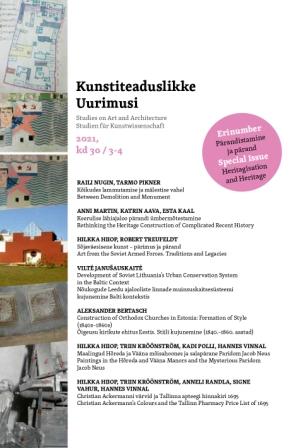Construction of Orthodox Churches in Estonia: Formation of Style (1840s–1860s)
Construction of Orthodox Churches in Estonia: Formation of Style (1840s–1860s)
Author(s): Alexander BertaschSubject(s): Museology & Heritage Studies, Architecture, Rural and urban sociology, 19th Century, Eastern Orthodoxy, History of Art
Published by: Eesti Kunstiteadlaste Ühing
Keywords: Construction; Orthodox Churches; Estonia; Formation of Style; 1840s–1860s;
Summary/Abstract: The article examines the construction of Orthodox churches in Estonia in the 1840s–1860s, focusing on the peculiarities and significance of that process as a specific historical and cultural phenomenon. These monuments, little studied before, occupy a prominent place in the country’s cultural heritage, especially in rural areas. The critical contexts of this phenomenon are 1) historical, i.e. the necessity of building churches for the Estonian peasants who converted from Lutheranism to Orthodoxy in the 1840s, and 2) cultural, i.e. the designing and constructing of Orthodox churches stimulated the development of professional architecture in Estonia. A significant number of churches have been attributed and the biographies of Baltic architects of this period have been studied for the first time.
Journal: Kunstiteaduslikke Uurimusi
- Issue Year: 30/2021
- Issue No: 03+04
- Page Range: 147-171
- Page Count: 25
- Language: English
- Content File-PDF

